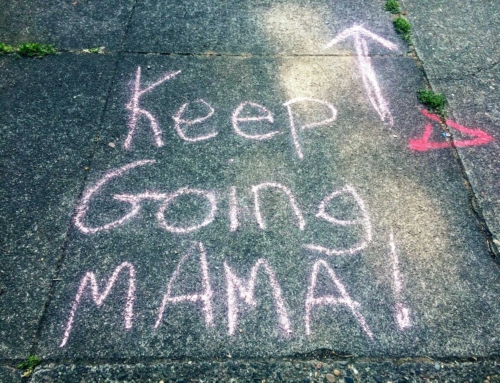If you find yourself saddened by the recent loss of a loved one and not about to heal, then it might be helpful to give yourself some time to work through the natural grieving process. In addition to grief counesling, there is a wonderful Christian-based workbook that helps with this journey.

The New Day Journal: A Journey from Grief to Healing by Mauryeen O’Brien is a great curriculum for people dealing with grief and loss that is made to be worked through with a support group.
The book is based on the premise that writing your thoughts, feelings, and experiences is one of the most helpful ways to be able to live and thrive with the pain caused by the death of someone you love.
According to O’Brien, in order to continue your life with happiness after the death of another, you need to work through the four “tasks” of grieving, always remembering your loved one and using those memories to build your own future.
The New Day Journal is broken up into different chapters or lessons that correlate with the four tasks. The four tasks are 1) to accept the reality of the loss, 2) to experience the pain of grief, 3) to adjust to an environment to which the deceased is missing and lastly, 4) to emotionally relocate the deceased and move on with life.
Each lesson or session has a structure that includes an opening prayer, a reflection that is read and discussed, questions that are answered individually and then discussed with the group, and a review of the homework that is to be completed by the next support group meeting. The group then ends with a closing prayer.
After you have worked through these four tasks, there is another section that focuses on continuing the grieving process. This section covers journeying into your new life situation and planning for the future.
The New Day Journal also includes appendices that offer suggestions for holidays and special occasions, as well as suggestions for further reading. There is information on bereavement support groups and special prayers for you to say to help you through your grief.
The main way that processing occurs in this curriculum is through journal writing and discussion with others. At the beginning of The New Day Journal, O’Brien discusses how journal writing can be healing and introduces the emotions of grief.
Journal Writing
Writing in a journal is a great way to discover and “articulate what you are going through in your grieving process.” Journaling is just writing down your thoughts, feelings, anxieties, questions, whatever comes to mind without judgements or trying to censor in the places provided in the book.
 O’Brien suggests, “Journal keeping can also be seen as a form of prayer. It can help you see more clearly where you have been, where you are now and where you are heading.”
O’Brien suggests, “Journal keeping can also be seen as a form of prayer. It can help you see more clearly where you have been, where you are now and where you are heading.”
Journaling helps to get a good picture of yourself; your thoughts and emotions about day to day experiences and specific events. It is important to write down what has happened to you and within you since the loss of your loved one. Physically writing this down will allow you to be aware of your processes in healing.
The Emotions of Grief
There is a wide range of emotions in the grief process, some are harder to experience and understand than others. With these emotions, each person can experiences that at different times within the healing process.
Some people will even experience different emotions than you and that is okay. Not everyone that experiences grief has all the emotions that are listed below, but these are the most common emotions during your process.
Common emotions and experiences:
- Disbelief or denial
- Physical symptoms
- Idealization
- Anxiety or fear
- Bargaining
- Depression
- Lowered self-esteem
- Guilt
- Anger
- Loneliness
- Helplessness
- Preoccupation
The Four Tasks of Mourning
As mentioned earlier, there are four tasks of grief in The New Day Journal. Tasks 1-3 are broken up into 2 lessons.
Lesson 1: Task 1
TASK: To accept the reality of the loss
PRAYER: Reflection on Lazarus
REFLECTION: Read a paragraph about “What is grief?” and discuss.
QUESTIONS: The topic of these questions relates to the fact that your awareness increases gradually. The questions focus on intellectual, emotional and spiritual awareness of who died, what was their relationship to you, who told you or who did you tell, where you were when you heard, etc.
HOMEWORK:
- READING: Our grief journey can be growth-filled
- JOURNALING: Writing the story of your loved one’s death
CLOSING PRAYER:
The Serenity Prayer
God, grant me the serenity
To accept the things I cannot change,
The courage to change the things I can,
And the wisdom to know the difference.
Living one day at a time,
Enjoying one moment at a time,
Accepting hardship as a pathway to peace,
Taking, as Jesus did,
This sinful world as it is,
Not as I would have it,
Trusting that you will make all things right
If I surrender to your will,
So that I may be reasonably happy in this life
And supremely happy with you forever in the next.
Amen

Lesson 2: Task 1
TASK: To accept the reality of the loss
PRAYER: Read and reflect on Matthew 11:25-30
REFLECTION: The topic of the reflection is working at moving on with our lives.
QUESTIONS: Dive into focusing on the feelings of grief and how you have handled them.
HOMEWORK:
- READING: A passage in the journal, Our Feelings are Normal
- JOURNALING: Describe the roles your loved one had in your life
CLOSING PRAYER: Serenity Prayer
Lesson 3: Task 2
TASK: To experience the pain of grief
PRAYER: Read and reflect on Psalm 121
REFLECTION: Read a passage on guilt and anger and how they are by-products of the pain of grief that you are experiencing.
QUESTIONS: The questions in this lesson delve into the pain, guilt, anger and talk about how they are natural parts of the healing process.
HOMEWORK:
- READING: Emotions that surface after someone we love dies
- JOURNALING: Describe the emotions you are feeling most strongly
CLOSING PRAYER: Serenity Prayer
Lesson 4: Task 2
TASK: To experience the pain of grief
PRAYER: Read and reflect on Psalm 145
REFLECTION: Read a passage on the loneliness of grief alone versus lonely choice, then have a discussion around this.
QUESTIONS: The questions in this lesson touch on wanting to share with the deceased.
HOMEWORK:
- READING: This reading focuses on the benefits and struggles of choosing to be alone
- JOURNALING: Describe how these feelings impact your daily life
CLOSING PRAYER: Serenity Prayer
Lesson 5: Task 3
TASK: Adjust to an environment in which the deceased is missing
PRAYER: Prayer of St. Augustine
God of Life,
There are days when the burdens we carry
Chafe our shoulders and wear us down,
When the road seems dreary and endless,
The skies gray and threatening,
When our lives have no music in them,
And our hearts are lonely,
And our souls have lost their courage.
Flood the path with light,
We beseech thee, Lord
Turn our eyes
To where the heavens are full of promise
REFLECTION: The reflection is called “It’s a New Day,” and touches on the reality that how long and how well we adjust depends on the relationship we had with the deceased and the roles she or he played. It also reflects on our responsibility as survivors to redefine our life goals in a world from which the loved one is absent.
QUESTIONS: Related to decisions needed to be made right away vs. those to put off.
HOMEWORK:
- READING: The topic of the reading is, why the grieving process lasts so long.
- JOURNALING: Secondary losses in the grieving process.
CLOSING PRAYER: Serenity Prayer
Lesson 6: Task 3
TASK: Adjust to an environment in which the deceased is missing
REFLECTION: From survival to growth
QUESTIONS: Begin to adjust to life without our loved one
HOMEWORK:
- READING: There is Hope
- JOURNALING: Where are you on your grief journey
CLOSING PRAYER: Serenity prayer
Lesson 7: Task 4
TASK: To “Emotionally Relocate” the deceased and move on.
PRAYER: To let go, in which you are called to reflect on letting go and letting God.
REFLECTION: Read a passage on the process of moving on with your life; the process of finding a new way or new place in our life or emotions for our lost loved one. This gives permission to live your lives in a healthy way.
QUESTIONS: These questions ask you to reflect on how to intentionally create a place or “relocate” your loved one. These can be through stories, memories, and cherished moments and who you can share these with.
HOMEWORK:
- READING: Letting go and letting God and using Mary as a model for honoring the dead and being open to healing.
- JOURNALING: This journal is about how to let go and how it is not the same as forgetting the past.
CLOSING PRAYER: Serenity Prayer
After the Four Tasks of Grieving
Lesson 8: Continuing the Grieving Process
LESSON: Continuing the grieving processes; journeying toward a new life
PRAYER: Read and reflect on Footprints in the Sand
REFLECTION: Discuss the passage about The Road to Emmaus
QUESTIONS: Listen to God; Has God heard my prayers?
HOMEWORK:
- READING: This reading asks you to think about journeying beyond the loss.
- JOURNALING: The topic of this journal is, where have you been and what lies ahead?
CLOSING PRAYER: Serenity Prayer
LESSON 9:
LESSON: Moving toward closure
PRAYER: To read and reflect on Psalm 23
REFLECTION: Discuss being able to say goodbye to some things and saying hello to the new.
QUESTIONS: The questions revolve around recognizing how far you have come and where you still need to go.
HOMEWORK:
- READING: Setting realistic goals
- JOURNALING: Writing down your goals for now, in 3 months, in a year.
CLOSING PRAYER: Serenity Prayer
Facilitating a Support Group with The New Day Journal
Anyone can be a facilitator for this curriculum, with some training. If you are interested in leading a bereavement group with The New Day Journal, you have to go through about 40 hours of training. You can go to your local Archdiocese through the Catholic Church, or you can ask the staff at your local parish.
 Before committing to being a leader, you have to be willing to commit your time and be consistent in holding sessions. Each group runs for 11 weeks and meets once a week at the same time and at the same place.
Before committing to being a leader, you have to be willing to commit your time and be consistent in holding sessions. Each group runs for 11 weeks and meets once a week at the same time and at the same place.
The sessions are 60-90 minutes in length. Being consistent and setting a schedule is very important to the people in the group as this can sometimes be the only stable thing in their lives during the grief process.
If you are willing to do the training and can be consistent for your group members, but are a little anxious about leading the group. There is a guide in the Leader’s Manual. This guide can help you through the session and gives advice on how to close a session, how to evaluate a session, and much more. There is also reference material throughout the curriculum that can help gain greater knowledge about the grief process and how to lead the group.
Grief Counseling When You’re Not Ready for a Support Group
Not everyone is ready for, or a good fit for a support group and that is fine. If you find yourself not able to talk about your loved one, or if you aren’t ready to let go, then a group setting might not be the best place for you at the moment. Thankfully though, there are different options for you.
You can request to see the pastor or leader at your church for a one-on-one conversation. You can also go to a therapist that specializes in grief counseling and the grieving process. You can even read books about the grief process if you are not ready to talk to someone.
If you find yourself having thoughts about harming yourself or harming someone else, you can always reach out to crisis lines and talk to someone about the pain that you are experiencing.
As always, feel free to contact one of the counselors in the counselor directory on this site for a grief counseling appointment.
“Holiday of Ice”, Courtesy of GollyGforce, Flickr.com, CC BY 2.0 License; “Every Dawn Brings New Light”, Courtesy of John Haslam, Flickr.com, CC BY 2.0 License; “Serenity Prayer”, Courtesy of Violette79, Flickr.com, CC BY 2.0 License; “Holy Cross at Sunrise:, Courtesy of Sean MacEntee, Flickr.com, CC BY 2.0 License










